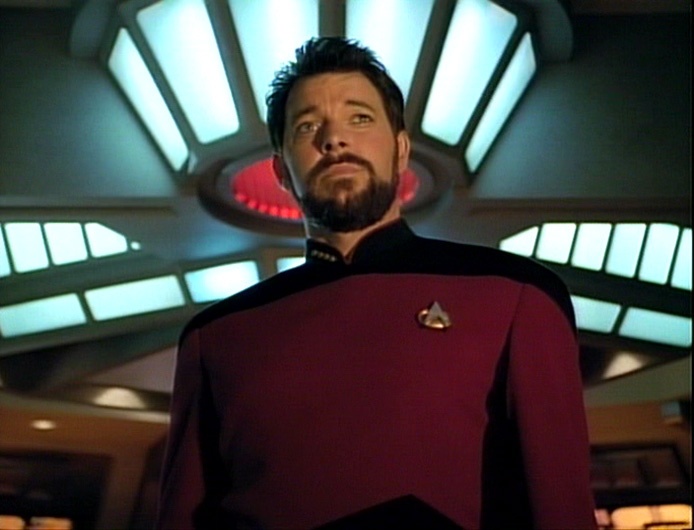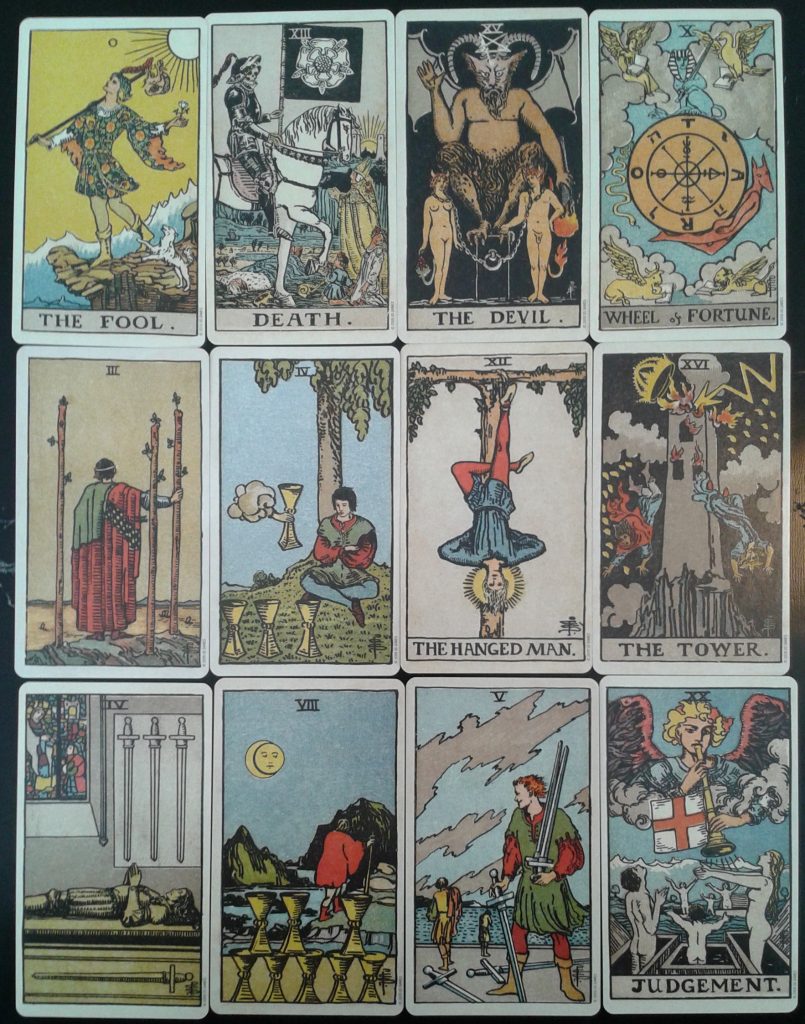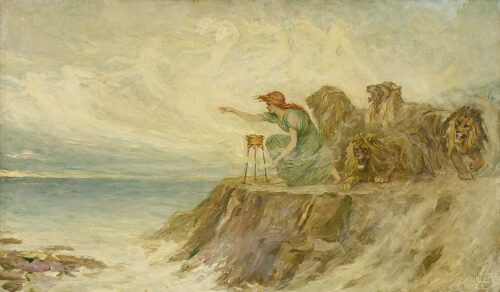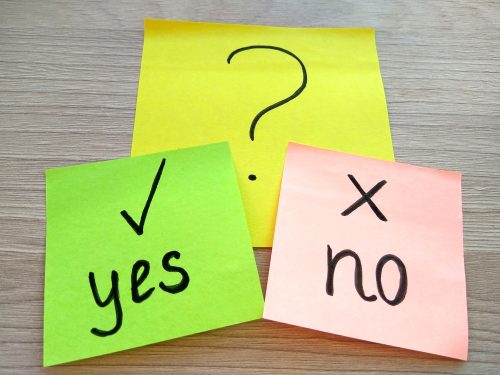Riker Saw Himself as if Dead

Guinan was wrong.
After making extensive repairs, the Enterprise headed towards Wolf 359 to re-engage the Borg after it had assimilated Captain Picard. While they raced to the battle, Guinan confronted Riker in the captain’s ready room. She told him he needed to let go of Picard if he was going to lead the crew and ship successfully against this all-too-powerful enemy.
Guinan was wrong. What Riker needed was to let go of himself.
For those who are true Star Trek geeks like myself, you know that Riker prefers to be a little fish in a big pond (and he really wants to keep the away missions for himself!). He was offered command of the Drake and turned it down to do a tour on the Enterprise—he chose a lateral move as first officer rather than becoming a captain. He turned down the big chair again when he was offered the Aries. He claimed it was because it wasn’t the Enterprise, but deeper emotional currents were at play as he needed to prove to his father that turning down the Drake and now the Aries to be on the Enterprise were the best decisions for his career. Now he had been offered the Melbourne, and yet again he said no thanks. Everyone, including himself, wondered if he was nuts for choosing first officer of the Federation’s flagship over full command of another ship, offering its own unique missions and challenges.
The Enterprise arrived at Wolf 359 hours after the battle. Riker, now serving as captain, surveyed the carcasses of ships littering space. The Borg was long gone—heading to Earth at high warp. Among the dead was the Melbourne, which Riker would have been commanding if he had not gotten so comfortable aboard the Enterprise. He stared at the sparking corpse of the Melbourne, the pain and loss clear in his eyes. He looked down. When he raised his eyes again, determination set his jaw as the pain in his eyes turned to anger. Riker saw himself as if dead at Wolf 359. Riker finally let go of himself.

Let’s look at this sequence with tarot cards to explore how cards that represent change and endings apply to unique story elements. I’ll put it into chronological order so it makes better sense.
Riker Turns Down the Drake
1. Riker turns down command of the Drake to serve as First Officer on the Enterprise.
The Fool. Some people might consider it a foolish decision not to take the higher rank, but to accept the role of first officer of a galaxy class starship is a feather in one’s cap. It’s a risky move—with potential for greatness. This is certainly a Fool moment.
Riker Turns Down the Aries
2. Riker turns down command of the Aries and a scientific mission to the backwaters of the universe because his dreams are bigger than this. Emotionally he needs to prove to his father that his career decisions are valid.
Death. This is what Joseph Campbell calls Atonement with the Father: To look on the one who has perpetrated the horrors of the world and forgive him. It is the death of the ego. I picked this card for several reasons—this is when Riker truly admits to himself that it is the mission that matters, not the rank. He doesn’t want power as much as excitement. In many ways, this is the death of his dream of becoming a captain by a certain age. He also confronts his father about how he was raised. When as a boy he hooked a fish, his father wouldn’t let him reel it in, but then photographed him with the fish as if he had caught it himself. Because his father was assigned to brief him on the Aries mission, he needed to confront and reject the idea that his father was setting him up to be captain; psychologically Riker felt that he had not earned it but that his father gave it to him. By denying the catch—of the fish, or of the captaincy—he destroyed his father’s power over him and truly started on his own unique journey. Death is the natural and anticipated ending of a predictable cycle.
The Borg Threat
3. The Enterprise crew discover evidence that indicate the Borg have entered Federation space.
Devil. Clearly the Devil card represents the adversary in any story, and because he stands on a half cube, it’s only appropriate in reference to the cube shaped Borg. Also, the Devil is not entirely human, like the Borg.
Riker Turns Down the Melbourne
4. Riker turns down command of the Melbourne because he says Picard needs him due to the Borg threat.
Wheel of Fortune. To me the Wheel is something that can go either way, no definitive outcome can be seen or expected. Due to the lack of a really strong reason for Riker to turn down the commission (he says that the Melbourne isn’t the Enterprise—but it’s a good ship on the frontlines—and that Picard needs him—not really, Shelby is certainly more knowledgeable about the Borg than Riker), it seems to be suggested that Riker intuitively sensed that taking the Melbourne would be disastrous. However, Riker is both a strategic thinker and very creator battle commander, so I would guess that if he had been in command of the Melbourne, Wolf 359 would have turned out differently. But we’ll never know.
“Reconsider”
5. Picard tells Riker to reconsider.
Three of Wands. The open door. A promotion and new opportunity awaits. A man on a high cliff overlooks a bay with three ships—Riker from his vantage point on the Enterprise considers the small and distant ships he is offered.
“What Do You Want?”
6. Deanna asks Will, What do you want?
Four of Cups. What you have is wonderful. What more could you want? What MORE do you want? Over a drink in 10-Forward, Deanna asks Will what he wants, what single opportunity could override those three offers of command.
The Borg Captures Picard
7. The Borg captures Picard and turns him into Locutus.
Hanged Man. The Hanged Man combines elements of waiting, patience, changing perspective, treading water, being hung up. Picard is in a way suspended—he’s not dead, but not available either. He’s been changed, but could still be redeemed. Also, historically the Hanged Man refers to someone who is a traitor, and we will discover later that Jean-Luc Picard’s complete knowledge has been assimilated by the Borg, rendering all previously established tactics and protocols for this mission useless. He is unwittingly complicit in the Borg’s attack on the Federation.
“Fire!”
8. Riker gives the command to fire with the modified deflector dish on the Borg and Locutus.
The Tower. This was the cliffhanger moment at the end of Season 3, and writer Michael Piller claims that he was planning on leaving Star Trek and so wrote an impossible scenario, believing another writer would have to resolve it. As it was, they gave him a promotion to Executive Producer and he still had to write the ending of the episode.
I think the Tower goes here. The Tower represents sudden, unexpected change that is perceived in the moment as negative. Clarity and self-understanding tend to arise from a successfully negotiated Tower experience, but when defining the cards, I try to stay within the immediacy of the experience, not necessarily its results.
At the beginning of the episode, there is no way Riker would have had the least inkling that he would be firing on the captain he most admired. However, this is a false climax. Season 4 begins with the Enterprise firing this new weapon—but absolutely nothing happens, other than burning out the deflector dish. We realize that because Picard had known of this plan, that when he was assimilated, that knowledge became part of the Borg hive mind, and it was able to prepare a defense.
The true Tower moment is the realization that everything Picard knew about the Federation is now known to the Borg. Everything that went before is now lost. Also, the Enterprise is out of commission for 10-12 hours. All forward motion in the story comes to a complete halt. It might be tempting to say that the Tower is also the loss at Wolf 359, and that would be an accurate metaphor, but that battle is not shown in this episode, although its repercussions extend not just through the episode, but throughout the series and into other spin-offs.
Failure
9. The plan fails. Extensive repairs are needed.
Four of Swords. Rest from strife is the title of the card. It represents recuperating after a conflict or challenge.
“Let Go”
10. Guinan advises Riker to let go of Picard.
Eight of Cups. The title is Abandoned Success. The character walks away from the cups which represent emotional support and walks toward the rocky, dark side of the card.
The Fleet Destroyed
11. Enterprise arrives late to the party at Wolf 359. They find a ship graveyard.
Five of Swords. The battle is over. There is nothing left to do but pick up the pieces.
The Melbourne Destroyed
12. Riker sees the broken shell of the Melbourne.
Judgment is the transition from the mortal to the immortal, from the ephemeral to the eternal. The previous ways of doing or being are gone; a new and lasting experience lies ahead. Riker is not offered command of a ship again in any of the remaining four seasons of the Next Generation. He has individuated from his father, his beloved captain has turned against him, he even choses as his first officer Commander Shelby, the woman who has consistently challenged his authority from her first entrance. Riker has come into his own as a commander and leader. He leads the Enterprise in one of the most important conflicts she will ever engage in. He proves that he can do it. And then eventually he returns to the right hand of Picard knowing that he still gets to lead all the away teams. He no longer needs to prove himself.
Pursuit of the Borg
13. Riker orders pursuit of the Borg.
The Fool. All previous plans are scrap, the Enterprise is a lone ship, all available Federation and Klingon ships have been lost at Wolf 359. The Enterprise is bringing a knife to a gunfight. Riker pursues anyway. A risky move with the potential for greatness.
Themes in the Tarot: Transformation, Change, Endings
Cards that describe change and transformation:
- Wheel
- Death
- Tower
- Judgment
Wheel: The Wheel is something that can go either way, no definitive outcome can be seen or expected. It is about change in general.
Death: Death is the natural and anticipated ending of a predictable cycle. It represents endings.
Tower: The Tower represents sudden, unexpected change that is perceived in the moment as negative. Clarity and self-understanding tend to arise from a successfully negotiated Tower experience, but when defining the cards, I try to stay within the immediacy of the experience, not necessarily its results. Unexpected endings or loss, transformation IF successfully negotiated.
Judgment: Judgment is the transition from the mortal to the immortal, from the ephemeral to the eternal. The previous ways of doing or being are gone; a new and lasting experience lies ahead. True and complete transformation.
***
I first jotted some of these thoughts down in a Facebook comment in response to Barbara Moore’s article, Transformation vs. Change, published on the Llewellyn blog.
Joy Vernon has been studying and teaching energetic and esoteric modalities for more than twenty years. She is the organizer of the Denver Tarot Geeks, Denver Tarot Meetup and Denver Traditional Reiki Meetup, and she served on the faculty of Avalon Center for Druidic Studies. She is one of the psychics at Isis Books and is a Certified Professional Tarot Reader and a member of the American Tarot Association and Tarosophy Tarot Association. Joy also teaches Traditional Japanese Reiki. For information on upcoming classes or to schedule an appointment, please visit JoyVernon.com.
© 2015 by Joy Vernon. All rights reserved.








Happy birthday!